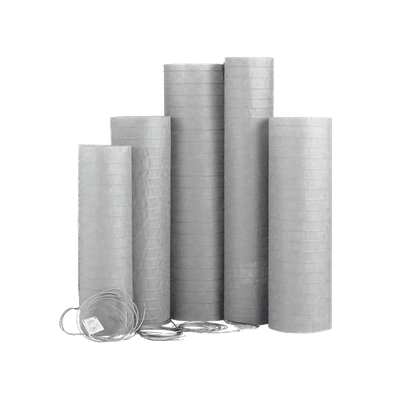Questions and concerns are often raised when ceramic tile or stone is to be installed over a radiant-heating system. These concerns usually are regarding any detrimental effect that the heat from the radiant heating might have on the bond of the tile, approved substrates and when the system can be activated. Typically, the maximum heat from a radiant-heating system does not exceed 85°F (29°C); this level of heat would not affect installation systems and accessories that are designed for tile and stone.
The TCNA Handbook for Ceramic, Glass, and Stone Installations provides recommended minimum cure/dry times for individual substrates and products. Minimum cure times are not listed here due to the many combinations of systems in the TCNA Handbook; refer to the TCNA Handbook for specifics. At a brief glance, these individual substrates and products entail:
Substrate suitability
Adhesive suitability
Underlayments
Type of system
The handbook further recommends the following installation practices. Always follow manufacturer’s recommendations when installing product:
Substrate suitability
Adhesive suitability
Underlayments
Floor-warming systems
MAPEI has a full line of electric radiant-heating systems that are suitable for use under a variety of floor coverings. Whether you are looking to take the chill off a bathroom floor or heat an entire room, MAPEI’s Mapeheat has the solution you need.
Mapeheat Mat: Pre-wired floor-heating fabric; compact 1/8" (3 mm) profile for minimal floor buildup; even heat distribution, with no cold spots; easy installation; standard and custom mats available
Mapeheat Cable: Suitable for wet environments, such as showers and steam rooms; for use with Mapeheat Membrane or Mapeheat Cable Guides
Mapeheat Membrane: Crack-isolation and waterproofing membrane; thin profile of less than 1/4" (6 mm); replaces plywood or cement board as tile underlayment





Toll-free within Canada:
Technical Services at 1-800-361-9309
Customer Service at 1-800-668-1212
Copyright © 2025 MAPEI Inc. All rights reserved.
2900, avenue Francis-Hughes, Laval (Québec) H7L 3J5
Comments
Load more comments